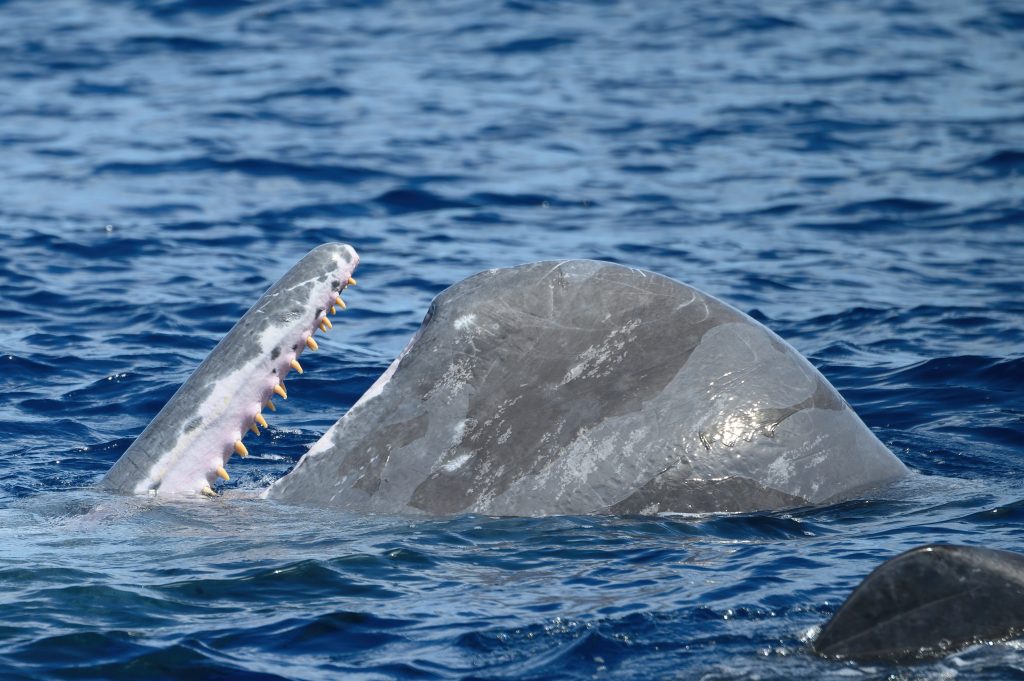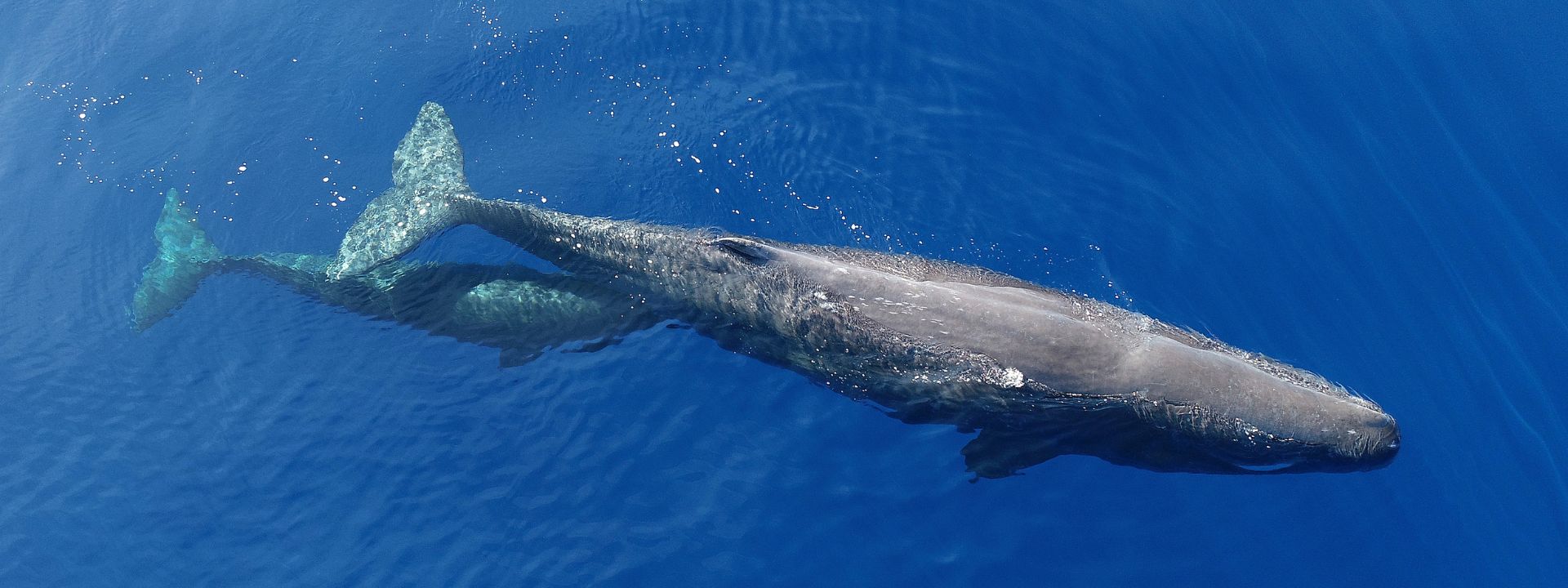As cetaceans lack hair, covering their skin, it is more open to cuts and abrasions than the skin of other mammals, leading to a high level of visible scars. In cetaceans, these scars remain white or unpigmented and can be caused by a wide variety of injuries such as accidents, parasites, predators, or intraspecific fights (McCann, 1974). These scars are widespread in cetaceans of the Odontocete family (toothed whales), to which the sperm whale belongs.
Whether you’re a marine enthusiast, a biologist, or simply curious about these ocean giants, discover the stories etched into the skin of the sperm whale and gain a deeper understanding of their fascinating existence.

Scars from Intraspecific Fighting
In sperm whales, it is known that some scars, often arranged in parallel, come from intraspecific fighting between males. These scars are perceived as an indicator of male “quality” (MacLeod, 1998).
Sperm whale’s prey consists mainly of cephalopods. So they do not require the use of teeth, which allowed them to evolve as weapons for fighting. This results in an increased importance of signalling quality. And helps to avoid risks of escalating aggressive encounters between unevenly matched individuals (MacLeod, 1998).
These scars start to appear around the time of maturity. They indicate age, with older and larger animals more heavily scarred (Kato, 1984). These individuals have so many scars that they overlap each other.
Check all our articles exploring the unique wildlife of the Azores: Dolphin Conservation Status | Pink Dolphins | Tuna in the Diet of Dolphins | Dolphin Olfactory Abilities | Whale and Dolphin Reproduction | Are Whales Carnivores? | Does Whale Sperm Make the Ocean Salty? | Communication Among Whales and Dolphins | How Do Whales & Dolphins Sleep? | How Long Do Whales Live? | How Long Can a Whale Hold its Breath
Scars from giant squid suckers

On the other hand, circular scars belong to fights with sperm whales’ main prey: the giant squid. This circular pattern belongs to the vigorous suckers that line the arms and tentacles of the squid.
In dealing with these enormous cephalopods, it is suspected that they use their head to pummel them, after grasping them with the jaws, which causes the tentacles to be impressed on the facial region of the sperm whale (McCann, 1974).
Scars’ Use in Photoidentification

It is unknown if these scars have any effect on the social structure of sperm whales, but for us, they are beneficial for our photoidentification work. Photoidentification enables us to determine the number of individuals in a group, study the life cycle of the animals, and identify the different groups surrounding the Azores.
Check all our articles exploring the unique wildlife of the Azores: Swimming Speed of Whales | Breath-Holding Capacity of Blue Whales | Dolphin Mating Behavior | Collective Nouns for Dolphins | Top 3 Facts & Curiosities about Dolphins | Dolphin Diet and Feeding Habits | Fin Whale Conservation Status | Sperm Whale Diet | Sperm Whale’s Scars | What Does a Whale’s Penis Look Like? | What Does Whale Milk Taste Like? | Portuguese Man-o’-War Jellyfish | What Do Whales Eat? | Can You Hear Whales Above Water?
Conclusion
When you see sperm whales resting on the surface of the water, they might seem gentle giants, but the scars in their bodies tell us a very different story; they are actually great fighters!
Definitely, scars make these animals much more identifiable, which also helps us to know them better by photoID and complete our catalog of sperm whales in the archipelago!
Would you like to know the best times for whale watching?
Take a look at our whale watching calendar and plan your next adventure! Don’t miss the chance to spot these majestic creatures in Azorean waters. 🐋 🌊
References
- Kato, H. (1984). Observation of tooth scars on the head of male sperm whale, as an
indication of intra-sexual fighting. Sci. Rep. Whales Res. Inst. Tokyo 35: 39±46 - MacLeod, C. D. (1998). Intraspecific scarring in odontocete cetaceans: an indicator of male
‘quality’in aggressive social interactions?. Journal of Zoology, 244(1), 71-77. - McCann, Charles. (1974). Body scarring on Cetacea-odontocetes





















